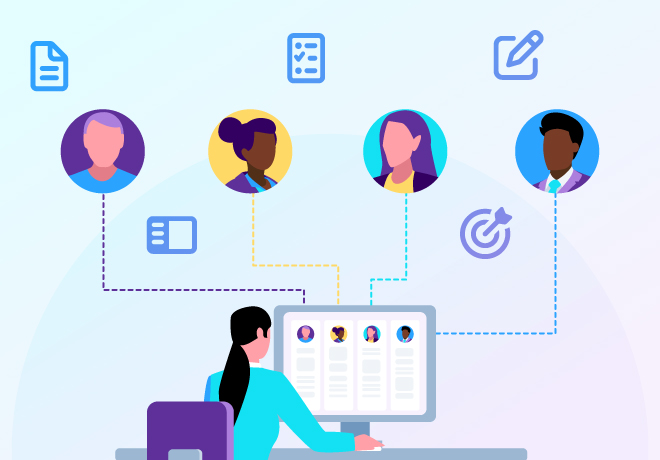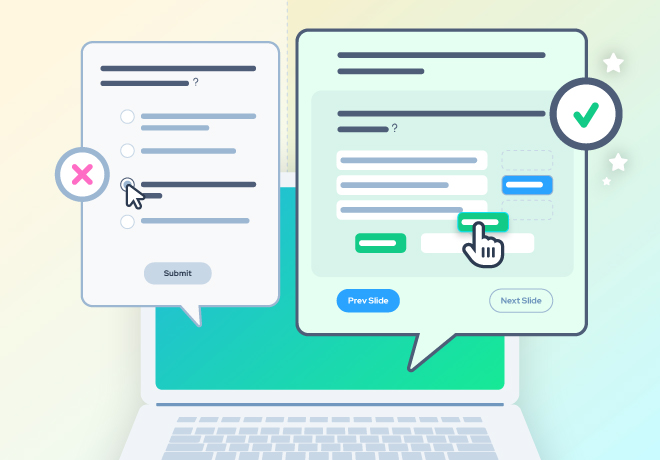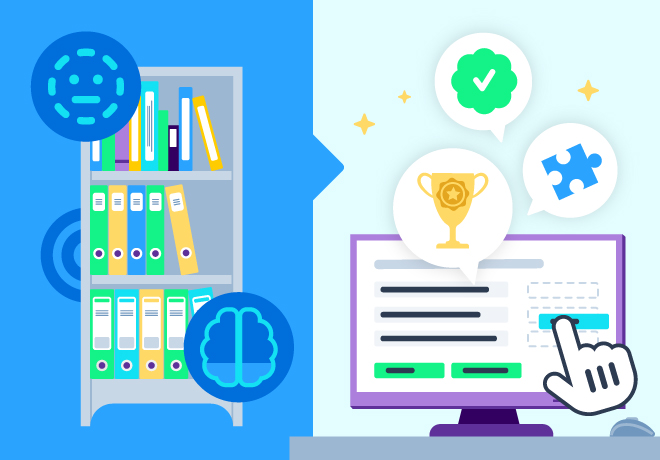
4 key benefits of providing meaningful learner feedback in your online training

Related articles
Get valuable eLearning insights to your inbox.
Listen to Neovation’s Demystifying eLearning podcast generated with NotebookLM!
Listen to our podcast on your favorite platform!
Learners like to know how they are doing and how they can improve. That’s why formative feedback — that is, feedback they receive throughout their learning, not only at the end — offers so many benefits.
When formative feedback is provided using best practices, it can help learners understand what to do, what to stop doing, and what to continue doing. It provides learners with valuable insight into where they excel and where they need to improve. By popping up at key moments during learning, formative feedback can help learners correct course, focus on the topics they most need to study, and deepen their learning.
This article describes effective formative feedback and its benefits, and concludes with suggestions for how to incorporate meaningful learner feedback into your eLearning materials.
3 Elements of meaningful and effective feedback
Feedback that primarily delivers corrections and criticism is not effective. It simply serves to alienate learners without telling them how to improve. Similarly, feedback that merely states that the learner got something correct or did a “good job” is not meaningful because it does not provide actionable information, even if it gives the learner a positive feeling.
This type of empty feedback is a missed opportunity to help learners improve their skills and knowledge and develop professionally.
Instead, effective constructive feedback provides specific information about a learner’s successes and mistakes and includes the information needed to correct those mistakes. It includes these three elements:
1. Fact-based
Meaningful learner feedback refrains from judging the learner or their actions; it is fact-based and solutions-focused. It describes why an answer is correct or incorrect with specific information that relates to the training content.
2. Provides context
Effective feedback describes what the learner has done well. It also explains why an incorrect response is not the right choice. It might do this by restating or paraphrasing relevant content from the training material or by describing possible consequences of the selected response.
3. Supports further learning
Effective feedback, particularly in a final exam or exercise, should support additional learning. It might suggest ways that the learner can improve their skills and performance, perhaps linking to resources or sections in the course they can review.
4 Key benefits of effective learner feedback

1. Provide a clear path of action
Feedback given in the moment that explains what is right, what is not, and how to proceed offers learners a clear path forward. The feedback might include recommendations or point the learner toward a better response. Or it might suggest that they review relevant content and choose a better response. Either way, it interrupts the error and redirects the learner toward improved performance.
2. Catch problems early
Rather than waiting until the final exam, well-placed formative feedback catches the error at the moment the learner makes it — before an incorrect action or response has become deeply embedded in the learner’s mind and memory.
If the learner is struggling early in a training module, effective feedback catches the problem early enough to redirect them to foundational content before they become frustrated and give up.
3. Reinforce the training material
Providing meaningful, effective feedback throughout a training module reinforces the material: Content is presented and explained, then learners are asked to recall or apply it. If they are correct, the feedback lets them know that — and restates the material. Reinforcement.
Even more important, if the learner is incorrect, the feedback lets them know that and restates the correct information, perhaps also guiding the learner to resources for deeper learning. This provides reinforcement and additional instruction.
In either case, the learner gets a bit of strategic repetition of learning content!
4. Clarify goals and evaluation criteria
Learners struggle if they don’t know what to expect or how their work will be evaluated. By including application opportunities with feedback, a training module presents clear criteria for success. This is also helpful in showing learners their progress and reducing uncertainty. The success of a correct response or the puzzle of finding the best response can motivate learners to continue, even when the training content is complex or challenging.
5 ways to build meaningful feedback into learning materials
Designing training materials with frequent knowledge check activities provide opportunities to include feedback throughout the training module. Try these five ways to build meaningful learner feedback into your training content:
1. Add scenarios
Adding scenarios to your content provides ample feedback opportunities. The scenarios can be simple text descriptions with a selection of three to five possible responses; they do not need to be animated or graphically sophisticated. For each response, include feedback that describes the potential repercussions and, for less-desirable choices, suggest that learners consider other options.
2. Build a short ungraded quiz
Adding short knowledge check quizzes into each topic or chapter of longer training modules lets learners check their recall of complex information or concepts before going on to the next section. In your feedback on each response option, paraphrase the teaching material or definition of a term or concept. This reinforces correct responses and clarifies why incorrect ones are wrong — while also reinforcing the teaching.
3. Application exercises
Using a drag-and-drop or list format, ask learners to place the steps of a process into the correct order. Feedback here could consist of questions, hints, or explanations of why one task or step must be complete before doing the next. These can be useful in drilling learners on safety protocols or steps of simple processes.
4. Use hotspot graphics
Combine hotspot graphics with feedback to check learners’ understanding of diagrams, ability to locate key components, or ability to identify key product features. Feedback can reinforce teaching on why that component is important or how it’s used — and, in the case of an incorrect response, guide the learner to find the correct hotspot.
5. Create a puzzle
Creating a word game or matching game is a fun way to check knowledge and understanding of terms and concepts. Correctly completing the puzzle provides reinforcement, while hints and feedback can guide learners who are struggling to correct responses.
Learning Hub: free resources for eLearning
The Neovation Learning Hub contains many free resources and articles that can help you improve eLearning outcomes at your organization. Continue learning about learner feedback, read articles about custom eLearning development or instructional design, or find new eLearning tools to help you with your eLearning initiatives.

An experienced writer, editor, tech writer, and blogger, Pam helps you make sense of learning science and eLearning technology. She provides information you can use to drive improvements in your training effectiveness and ROI.
Become part of our L&D community
We publish a new learning hub article — full of useful, practical topics — weekly.
Not sure where where you want to start? Jump into one of our recently published articles and see where it takes you!








-svg.svg)
-svg.svg)
-svg.svg)
-svg.svg)